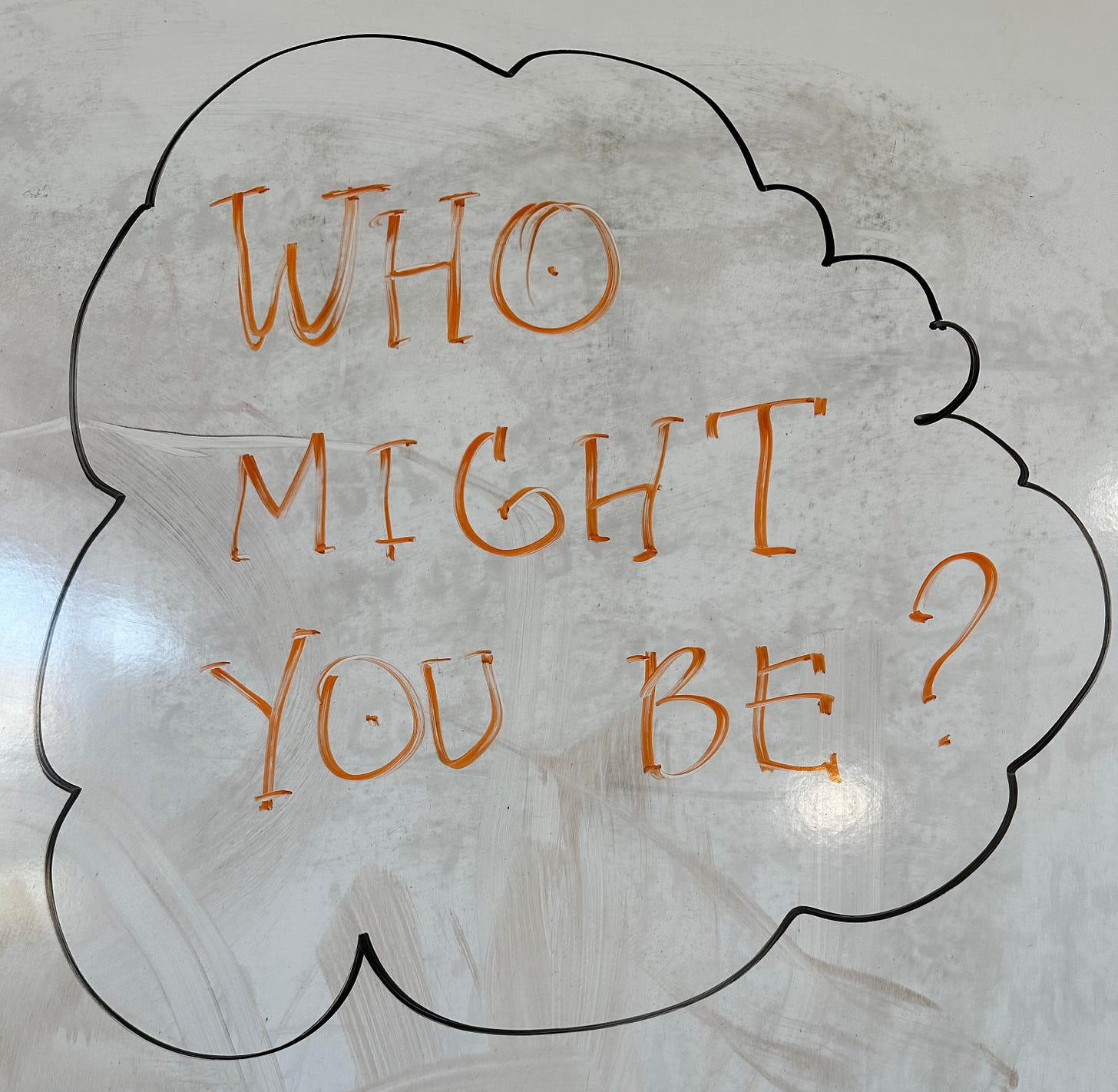This spring I spent some time talking to kids about their futures.
I volunteer as a mentor with Portland Community Squash, a local organization that “aims to build an accessible community center that holistically supports and unites its members” and provides academic and athletic guidance to kids in middle and high school. I offered to host a few sessions with students to encourage them to think critically about their lives and their goals.
I’ve been a middle school mentor since my own kids entered high school and needed (or wanted) less of my time. But this age group is not my moderating sweet spot — almost all of my professional work is with adults (often adults 50+) — so this was a bit of a stretch. Still, a lifetime in qualitative research has made me see the real value in self-reflection, and I wanted to talk to kids about the importance of questioning and imagining. Because the future may be unknowable, but our feelings about the future are not.
Over a few weeks, I met twice with one group of middle schoolers (roughly ages 11-13) and one of high schoolers (roughly 14-16). I employed several creative exercises to help them envision their futures, and then we did a tradeoff exercise, which was the real heart of the work. I’ve used this tradeoff exercise with healthcare providers in evaluating a TPP (the profile of a new therapeutic product), where the HCPs allocated a finite number of points to prioritize among characteristics of the new agent.
I gave the students a finite number of stickers to allocate between several aspects of life: health and sports, religion and spirituality, job, family, friends, hobbies, learning new things, money. I had them allocate based on their lives today—assigning more stickers to the more important elements, leaving out the unimportant ones—and then again based on their lives 10 years from now. As expected, the current allocations were heavily tilted toward friends, family, health and sports, and learning new things; this activity seemed to be both easy and pleasurable for the students to complete. The future, however, is where the real gold from this exercise resided, as the kids had to ask themselves: How is my life going to change? What new priorities are likely to arise? How can I make room for them? And what do I want to hold onto, even as my life unfolds? Not surprisingly, these were tough questions that tended to quiet the room.
As with projective techniques in a research interview, the conversation afterward is where the magic happens. With both age groups, we spent our time talking about the space in between: knowing what you know about your life today, and what you imagine about your life tomorrow, how can you build a bridge between the two? Or, in other words, how can you prepare for the unknowable?
Three responses in particular have stayed with me (and this is where the teacher becomes the student).
In order to prepare for the future….
I can learn to be more comfortable with change.
I can make something every day to prepare for the creative life I want.
I can be open and kind to everyone I meet, because I don’t know who might be able to help me some day.
Is it any wonder I love mentoring? Given the space and encouragement to reflect, humans - even young and inexperienced humans - have a great capacity for wisdom.
What wisdom do you need to uncover? I’d love to talk about the research questions you need to explore.


